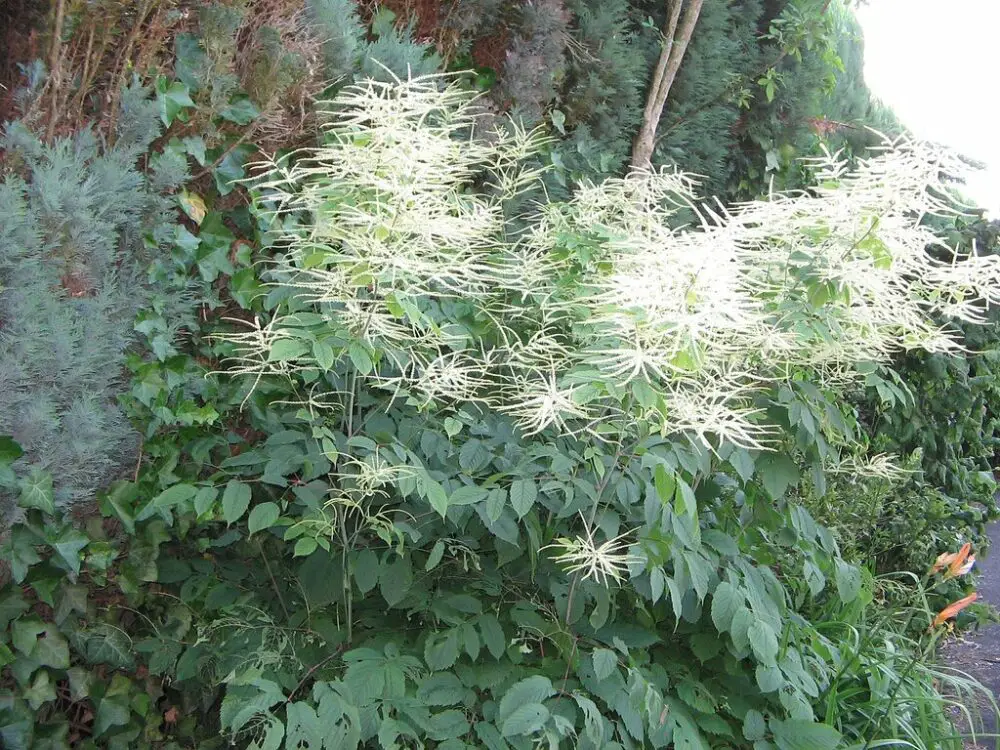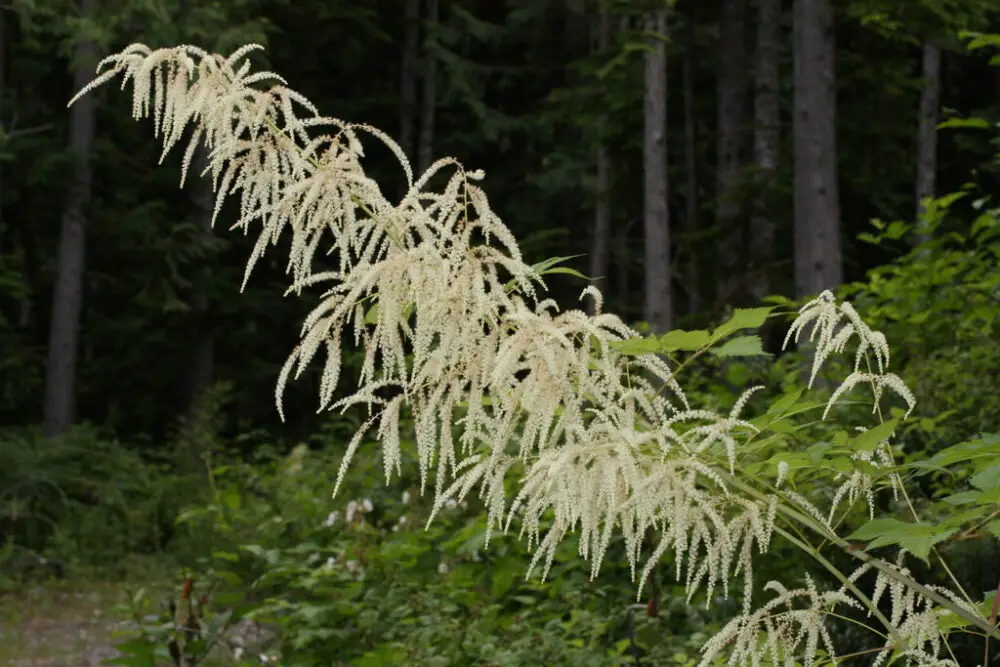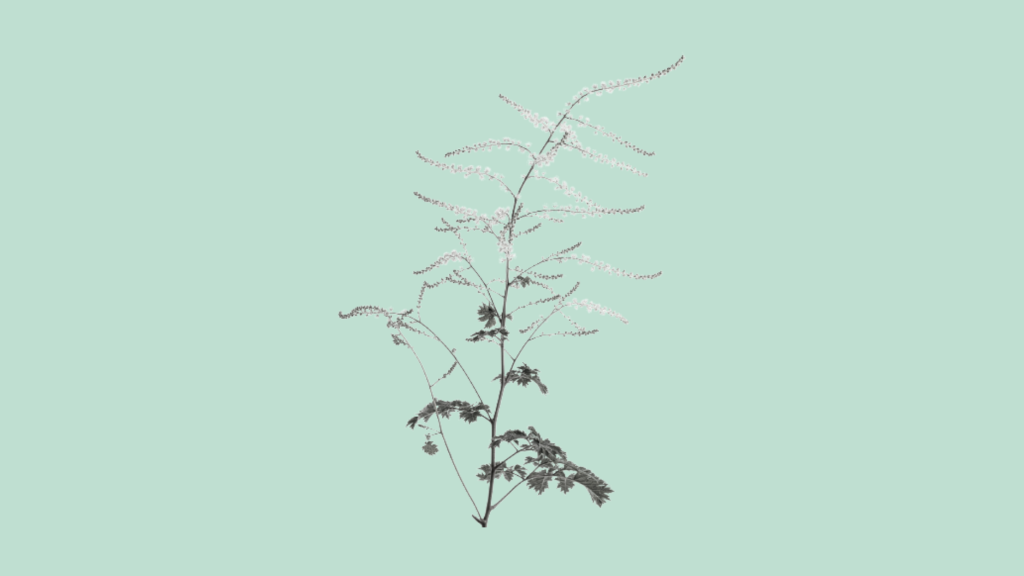A perennial plant found in North America, goat’s beard (Arucus dioicus) grows in bushy clumps and can reach 6 feet. Its creamy white flowers appear as feathery plumes. Goat’s beard prefers moist, wooded areas and water sources. The young shoots of Aruncus dioicus are edible.
Goat’s Beard plant profile
Goat’s beard (Aruncus dioicus), sometimes called bride’s feathers, is a beautiful plant with showy flowers found both growing as a wildflower or as an addition to many gardens.
It’s also known by synonyms:
- Aruncus sylvetster
- Aruncus vulgaris
Goat’s beard is dioecious, meaning the plants are either male or female, with the male plants being the showier of the two.
What Are You Foraging For Right Now?
We're thrilled to hear your ideas. What would you like to submit today? Feel free to share your thoughts and experiences with us.
A perennial plant and member of the Rosaceae or rose family, goat’s beard grows in bushy clumps and can reach a height of nearly 6 feet. Its creamy white flowers appear as feathery plumes that bloom at the end of long spikey stems,
The flowers are stunning and at their best for about 10 days before fading. As they fade, the plumes will turn a pale brown or tan color. The compound leaves below are dark green and bi-pinnately formed with a toothed appearance.
Easily found in North America, Asia, and parts of Europe, goat’s beard prefers moist, wooded areas and grows well near water sources like streams or shaded rivers.

Is goat’s beard a dandelion?
Aruncus dioicus is not a dandelion, but it can be confused with one – not because of its appearance.
The common name goat’s beard has been applied to more than one plant. This makes it essential to distinguish which you are referring to when having a conversation or looking for additions to your garden.
The three plants often called goat’s beard are:
- Aruncus dioicus
- Aruncus gethusifolius
- Tragopgon dubius
Aruncus dioicus is the larger of the two Aruncus species, with Aruncus aethusifolius (dwarf goat’s beard) being a miniature version of its larger cousin. Dwarf goat’s beard has all the same attributes, just smaller.
Tragopogon dubius, also called salsify, is indeed related to the dandelion and is considered a weed.
Is Astilbe the same as goat’s beard?
Astilbe is an herbaceous perennial that is very similar looking to goat’s beard and grows in similar conditions and habitats. Astilbe, however, is part of the Saxifragaceae family, whereas goat’s beard is part of the Rosaceae family.
At first glance, the two can be difficult to distinguish from one another. Upon closer inspection, you can see that the flowers of Aruncus dioicus are slightly less dense than astilbe, with a more open, airy feel. Astilbe flowers also have more color variety than Aruncus dioicus.
How to identify goat’s beard?
Goat’s beard can be initially identified by its height and showy flowers that bloom in late spring through mid-summer.
Because it can resemble false goat’s beard, further inspection is needed for accurate identification.
Look for the following attributes when identifying goat’s beard:
- Upper leaves are larger than lower leaves.
- Lower leaves are slightly hairy, 3 times compound, and paler than the upper leaves.
- Upper leaves are a darker green color, have no hair, and are less compound.
- Small, densely packed flowers in a creamy white color.
- Flowers will grow in spikey, elongated clusters.
When attempting an identification, consider the habitat as well. Goat’s beard will be found in cooler but not cold climates, and it’s unlikely to be found in full sun at high temperatures.

Is Aruncus dioicus edible?
The young shoots of Aruncus dioicus are edible, and Native Americans have used the roots over the years for medicinal purposes.
In Italy, goat’s beard has been used in soups and as an accompaniment to eggs.
Here are 2 recipes I recommend (tried and tested):
It should be noted that all wildly foraged plants should be identified with certainty, thoroughly cleaned, and eaten with caution in case of allergic reaction.

Is any part of goat’s beard poisonous?
The edibility and toxicity of goat’s beard depend on which goat’s beard you are handling.
In Aruncus dioicus, the seeds of the female plant are known to be poisonous and should not be eaten.
However, salsify (the weed that resembles a dandelion) has several edible parts, including the root.
What else are goat’s beards good for?
In addition to its culinary applications, Aruncus dioicus has long been used by Native Americans for medicinal purposes.
Among its applications are:
- Use of the root for poultices to relieve sores or bee stings
- Tea made from roots to soothe achy joints and feet
- The same tea has been used for the treatment of a variety of ailments such as sore throats, fever, and to quell internal bleeding
The roots have also been used to make a dye for clothing and even as love charms by some tribes.
From a landscaping standpoint, goat’s beard makes an effective barrier against invasive plants, is used as a tall ground cover, or to create boundaries for privacy.
Where does it grow?
Deer-resistant goat’s beard prefers cool places with partial shade. It’s often found in mountainous areas or near water sources.
Can you grow goat’s beard in your garden?
Goat’s beard is a popular garden plant and a favorite in shade gardens. Once established, it is low maintenance and requires little other than regular water. Best growth occurs in USDA hardiness zone 3-9.
Your goat’s beard will do best in rich soil that is well-drained and moist. It prefers part shade, but mature plants can tolerate full sun if temperatures are not scorching.
At full growth, it will take up a fair amount of space, so when planting, ensure there is enough room allocated. 2-4 feet per plant is the recommended spacing. If space in your garden is limited, consider a smaller cultivar like dwarf goat’s beard.
Because goat’s beard is dioicous, it will require both male and female flowers to propagate. When purchasing at nurseries, this is usually not noted.
Lorin is a writer, photographer and nature enthusiast in Sacramento, CA. In addition to gardening, she makes a regular practice of forging for edible plants and flowers. Nature nourishes if you know where to look.

